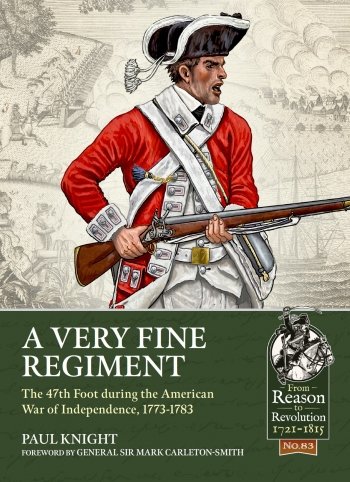-
Załączniki bezpieczeństwa
Załczniki do produktuZałączniki dotyczące bezpieczeństwa produktu zawierają informacje o opakowaniu produktu i mogą dostarczać kluczowych informacji dotyczących bezpieczeństwa konkretnego produktu
-
Informacje o producencie
Informacje o producencieInformacje dotyczące produktu obejmują adres i powiązane dane producenta produktu.HELION
-
Osoba odpowiedzialna w UE
Osoba odpowiedzialna w UEPodmiot gospodarczy z siedzibą w UE zapewniający zgodność produktu z wymaganymi przepisami.
The 47th Regiment of Foot served throughout the whole of the American War of Independence. The regiment experienced the transition from peacetime soldiering in Ireland and New Jersey, through the deteriorating political situation, to open rebellion. The officers and men had to alter their tactics and doctrine from peacetime garrison duties, through conventional warfare around Boston to woodland operations in Canada and upper New York.
Who were the 47th Foot? How well did they overcome the challenges they faced? What became of them? Where they unthinking automatons lead by an officer class incapable of adapting to the reality of warfare in North America?
Paul Knight examines the regiment within the context of a British Army which was neither stuck in the past nor incapable of reform. New uniforms, weapons, and drill manuals reflected the lessons of the previous war within an environment of doctrinally innovative generals. Against this, the regiment had to train in an era of the financial parsimony and where the friction of peacetime soldiering mitigated against training objectives. Nevertheless, the 47th was judged ‘A Very Fine Regiment and Fit for Service’ before it sailed for New Jersey in 1773.
In North America, the 47th served in peaceful New Jersey and New York before joining the Boston Garrison in response to the deteriorating political situation there. After Boston, they were sent to Quebec where they drove American Rebels out of Canada before participating in the ill-fated Saratoga Campaign. Most of the regiment then endured years of captivity as part of the Convention Army. A fortunate part of the regiment avoided this fate and defended Canada’s borders for the remained of the war.
This period saw the 47th, and the British Army in North America, quickly adapting to the rapidly evolving political and military situations they encountered. They successfully evolved their tactics and doctrine from peaceful garrison duties to conventional warfare in response to open rebellion and then to irregular tactics for woodland fighting.
Paul Knight shows how the 47th Foot was able to adapt to the changing threats and operational environment quickly and effectively. These were thinking soldiers led by flexible officers capable of adopting to the prevailing operational environment.








